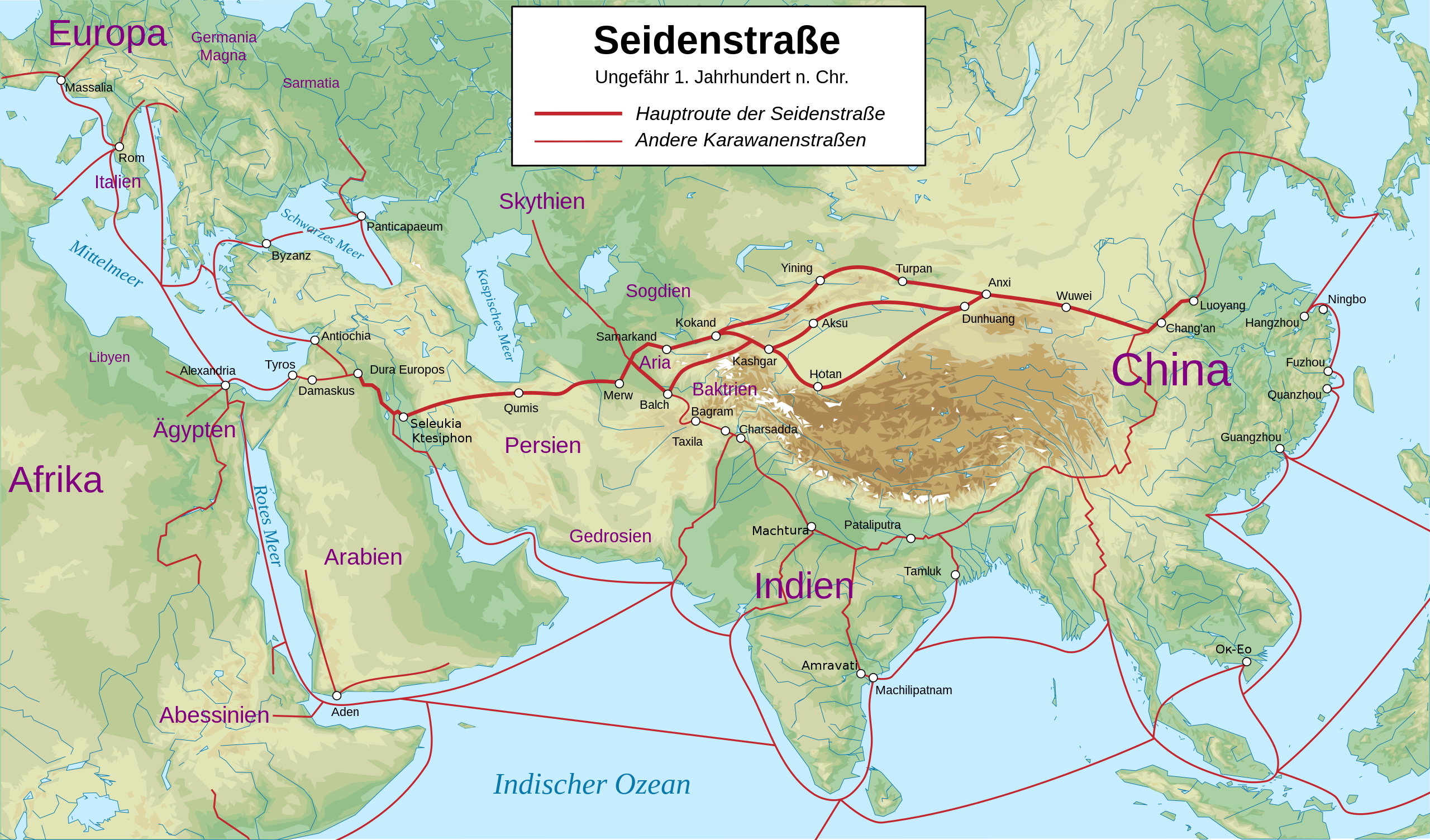For millennia, goods were traded and cultures spread along a network of routes between East Asia and the Mediterranean called the Silk Road.
◊
The Silk Road conjures images of ancient merchants and adventurers traveling back and forth between Europe and Asia. We imagine them on camels, crossing deserts and mountains and steppes, hauling fabric and spices and other valuable goods, intermingling cultures and cuisines, spreading languages and ideas.
But, if we’re honest with ourselves, most of us must admit we don’t know much about the historical reality of the Silk Road. We’ve probably heard of its most famous traveler, Marco Polo, but not a lot more than that. So, let’s take a look at some salient, but little known, facts concerning the legendary route.
For an insightful re-enactment and deep dive into Marco Polo's storied Silk Road journey, check out Marco Polo Reloaded on MagellanTV.
1. Unveiling the Origin and Name
The term “Silk Road” was coined millennia after its travelers began using it. The origin of the name – Seidenstrasse – is usually ascribed to Baron Ferdinand von Richthofen, a 19th-century German geographer, but recent research indicates that the term predates his supposed coinage of it.
2. A Complex Network of Trade Routes
The Silk Road was not a single road but a network of interconnected routes. The main ones ran through China, India, Persia (modern day Iran), Central Asia, Asia Minor, and reached as far west as Mediterranean Europe and south to the Horn of Africa.
3. Beyond Silk: The Array of Traded Goods
While silk was a highly prized commodity, a wide variety of other goods were also traded along the Silk Road, including spices, textiles, precious metals, art, paper, and technologies.

(Credit: Furfur, via Wikimedia Commons)
4. The Cultural Melting Pot of the Silk Road
The Silk Road was not just about trade. It served as a bridge between different cultures. Philosophies, religions (including Buddhism, Islam, Christianity, and Zoroastrianism), languages, scientific knowledge, and artistic styles spread with its travelers along the network.
5. The Silk Road’s Sunset: Decline and Transformation
Beginning in the late 15th century, the discovery of sea routes around Africa and to the Americas reduced the reliance on overland trade routes. With political changes and the rise of these maritime trade routes, the prominence of the Silk Road gradually declined.
6. The Enduring Legacy of the Silk Road
The Silk Road made a lasting impact on the countries and cultures it connected. It promoted economic and cultural exchanges, leading to the enrichment of societies along its path. Today, many celebrate it as an early symbol of global interconnectivity and intercultural understanding.
7. Modern Rediscovery and UNESCO Recognition
The modern appreciation of the Silk Road’s historical significance is highlighted by organizations such as the United Nations. Many cities and archaeological sites along the network have been recognized as UNESCO World Heritage sites.
Ω
Title Image credit: Adobe Stock

